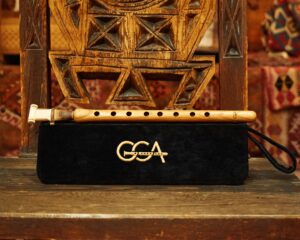
Duduk Special Gift Set in a Hard Case
Enhance Your Duduk Experience: A Special Gift Set in a Hard Case

The duduk and shvi are two traditional woodwind instruments from the Caucasus region, specifically Armenia, respectively. Although they share some similarities, such as the materials they are made from and some playing techniques, there are also some significant differences between them.
Design and Sound
The duduk is a double-reed instrument made of apricot wood, with a conical shape and a distinctive deep, mournful sound. It is commonly used in Armenian folk music and contemporary music and film scores. The duduk can produce a range of articulations, such as staccato and legato notes, as well as vibrato and glissando effects. The shvi, on the other hand, is a single-reed instrument made of reed or apricot wood, with a cylindrical shape and a bright, nasal sound. The shvi can produce a variety of melismas and articulations, such as trills, grace notes, and slides, and has a range of about two octaves.
Playing Technique
Another key difference between the duduk and shvi is their playing technique. The duduk is played by placing the reed between the lips and using a combination of breath and lips movements to create sound. In contrast, the shvi is played by blowing air into the instrument and using the fingers to cover and uncover the holes to produce different notes.
Cultural Significance
Both the duduk and shvi are important symbols of the musical traditions and heritage of their respective countries. They are often associated with cultural events and celebrations, such as weddings, funerals, and religious ceremonies. The unique and evocative sounds of these instruments have captivated audiences around the world and continue to play a significant role in the musical identity of the Caucasus region.

Enhance Your Duduk Experience: A Special Gift Set in a Hard Case

Duduk Instrument Prices There are a number of factors that can affect
GGA represents professional musical instruments, that are recognized all over the world. The instruments are exclusively hand-made works. Feel the spirit of the orient music.